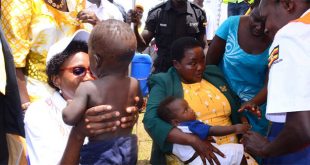Grey areas
One grey area is whether this is a deliberate and sanctioned government policy. Otine says in the absence of documentation or policy practice to indicate this, the claim that such killings are part of an elaborate government policy remains mute and unfounded.
He points out that historical evidence and practice indicates that as the leader of the NRA, President Museveni shunned and maneuvered his group away from committing assassinations. Notably though, he says, in reference to some assassination that occurred between 1981 and 1985, the U.S State Department alleged that they could have been committed by the NRA Guerillas. It also mentioned the UPC party cadres, petty criminals, unidentified gangs, and uncontrolled military elements as possibly behind such killings.
A second possible hypothesis to explain the rampant killings is the link between those that have lost their lives and extremist groups, in particular the ADF. Nearly all initial accounts provided by the security agencies pertaining to the killings roped in this rebel group.
Some of the Sheikhs had been members of the ADF at some point and were wooed back by the government through the Amnesty Commission, pardoned and permitted to go on with their normal lives. At least one of those killed was admitted into the armed forces at the rank of major.
It has been suggested by some commentators, that ADF has no love lost for deserters, those who are captured after failed escape attempts would be summarily executed.
Today, the ADF is a nearly decimated force, with its fighting capabilities seriously diminished. However, it has used such lulls in the past to reinvigorate itself and launch fresh attacks. Its threat in the region is seen as significant enough that it merited the setting up of a regional Joint Follow-Up Mechanisms based in Kasese. The group has exhibited acumen to learn new terror methodologies. Otine says an ADF sleeper cell within the country could be conducting some of the killings, in particular those directed against former ADF members and government officials.
“It is illogical to imagine that these would not have elements to either ensure their own security or eliminate those they see as threats,” Otine says.
Terrorists and extremists have made use of numerous methods to propagate shock and fear and their choice of methods to do this is almost always dynamic. In fact, they exhibit a “wide variation in their tactical choices”.
Otine says, Joan Kagezi was gunned down in 2015, just 11 days after the first reports of the arrest of Jamil Mukulu, the ADF leader in Tanzania on March 19, 2015. The assassination of AIGP Andrew Felix Kaweesi would occur around the anniversary of Mukulu’s capture (two days short).
Criminal elements
Another plausible explanation is that these killings are acts of criminal elements out for economic gain. This position is somewhat self-defeatist since all those who were attacked do not seem to have been robbed of any belongings. Considering however that such persons may be hired guns, whose economic gain is already met by a client still leaves this as a strong possibility.
Uganda police has established that a number of street children have offered services either as actual hit men or facilitators of the act. This practice accounts for70% of murders and robberies in Kampala. One particular killing that fits this theme is that of Susan Magara, who was kidnapped and held for ransom but was later killed.
President Yoweri Museveni has offered several reactions to the killings. But, according to Otine, some have been labeled aloof and entirely out of touch with the context for being heavily spiced with economic and infrastructural projects with little proposal to address the security concerns. He lists finger printing of all guns in Uganda, tagging of motor vehicles and motor cycles with electronic number plates, wearing of illuminating helmets, installation of CCTV cameras, the creation of a modern forensic laboratory, increased speed of response, controlling the use of Unmanned Aerial Vehicles (UAVs), preventing the misuse of social media, better border checks by Uganda Revenue Authority (URA) and sustaining a small professional army supported by a large reserve.
But, Otine notes, the Uganda Police Force, as the country’s lead law enforcement agency has been heavily criticised for security failures, in particular relating to the killings. A key denominator for most critics has been the force’s high handedness in their usage of tear gas, indiscriminate use of live bullets, and brute flogging of demonstrators using sticks and batons.
The UPDF has also been pitted in a latent battle with other security services, in particular the Internal Security Organisation (ISO).
“An immediate need to restore confidence in the police force cannot be adequately emphasised,” Otine says, “The force need to improve its investigative capacity”.
Otine says it needs better ballistics expertise, training to improve investigative practices in solving kidnappings and even crime scene handling.
Otine says: “The idea of merely using force in policing, torture in interrogations and parading of suspects even before quantifiable investigations are done must be purged from the operating procedures of the security services. The current challenges are novel and require an equally modern approach to curb them.
Intelligence led policing ought to be at the core of any reform, prevention of crime by reducing the opportunistic availability of the tools, resources, and space for them to be committed.In sum a pre-emptive policing”.
****
 The Independent Uganda: You get the Truth we Pay the Price
The Independent Uganda: You get the Truth we Pay the Price



